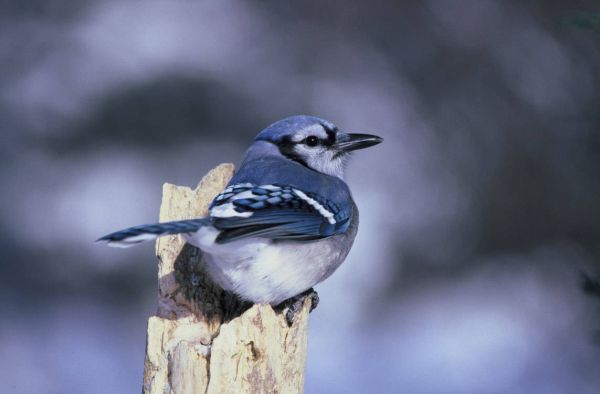
Many aspects of fall migration are not calculated to appeal to a bone-idle birder such as myself. The warblers are confusing. The raptors are confusing and distant. The shorebirds are confusing AND distant AND you will probably fall into quicksand and die. Far better just to stay inside and write about birds! But that’s sort of cheating.
Happily, there is one facet of the fall migration here in NYC that I’ve come to cherish; the annual movement of Blue Jays. As a kid, I took the fact that Blue Jays were found at our feeders in winter and in our woodlots in summer as evidence that they were simple, sedentary birds. New York City makes it clear that this isn’t quite correct. In fact, some Blue Jays move around a lot and they draw a lot of attention as they go, shrieking down blocks lined with oak trees or, like my own neighborhood, planted with sunflowers. Fall migration in Blue Jays takes place generally from August to October, so there’s plenty of time to enjoy the show.
A 1982 paper on Blue Jay migration fills in some details that a casual observer can only speculate on. According to the data the authors gathered from banded and recovered Blue Jays, the species shows both a northward post-breeding dispersal (which we’re probably seeing right now, in September) and a southward migration. A jay born and raised in New York State may winter in Alabama, Kentucky, West Virginia, or Tennessee, depending on its taste in barbecue. (That last bit is my own interpretation of the data.) Some stop as short as Pennsylvania. And many – more than 80% – never leave their nesting grounds at all. Most fascinatingly, a bird that migrated one year, even hauling its tail feathers all the way down to Alabama, may choose to hang out in New York all winter next year, or vice-versa. This pattern doesn’t seem to be strongly linked to food availability or weather. Nor, if an individual does migrate, do they always return to the same nesting territory the following spring.
So even if you’re not feeling up for much more of a challenge that going out on your balcony with a cup of coffee, you can still be part of the often-mystifying ornithological rites of fall.
Image by Dave Menke, courtesy of USFWS











Leave a Comment